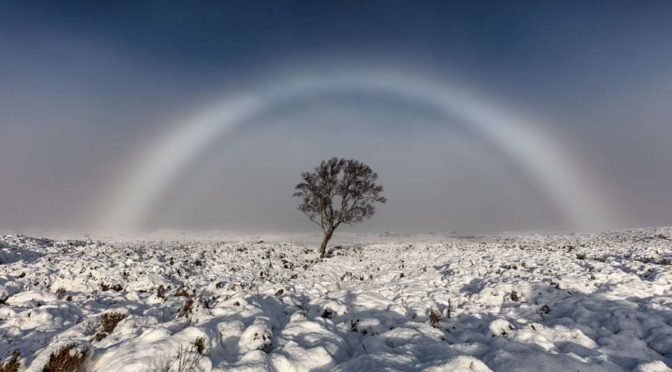Some natural events are so rare, so strange, but amazingly beautiful at the same time. They even seem out of our world, and sometimes it’s hard to believe they truly exist. Here are a few of them, 10 stunning and rare natural phenomena.
1. Fogbows
A fogbow, sometimes called a white rainbow or ghost rainbow forms in the same way as rainbows. The difference is, as its name suggests, it appears as a bow in fog rather than rain. In many cases, when the droplets are very small, fog bows appear white and are therefore sometimes called white rainbows.
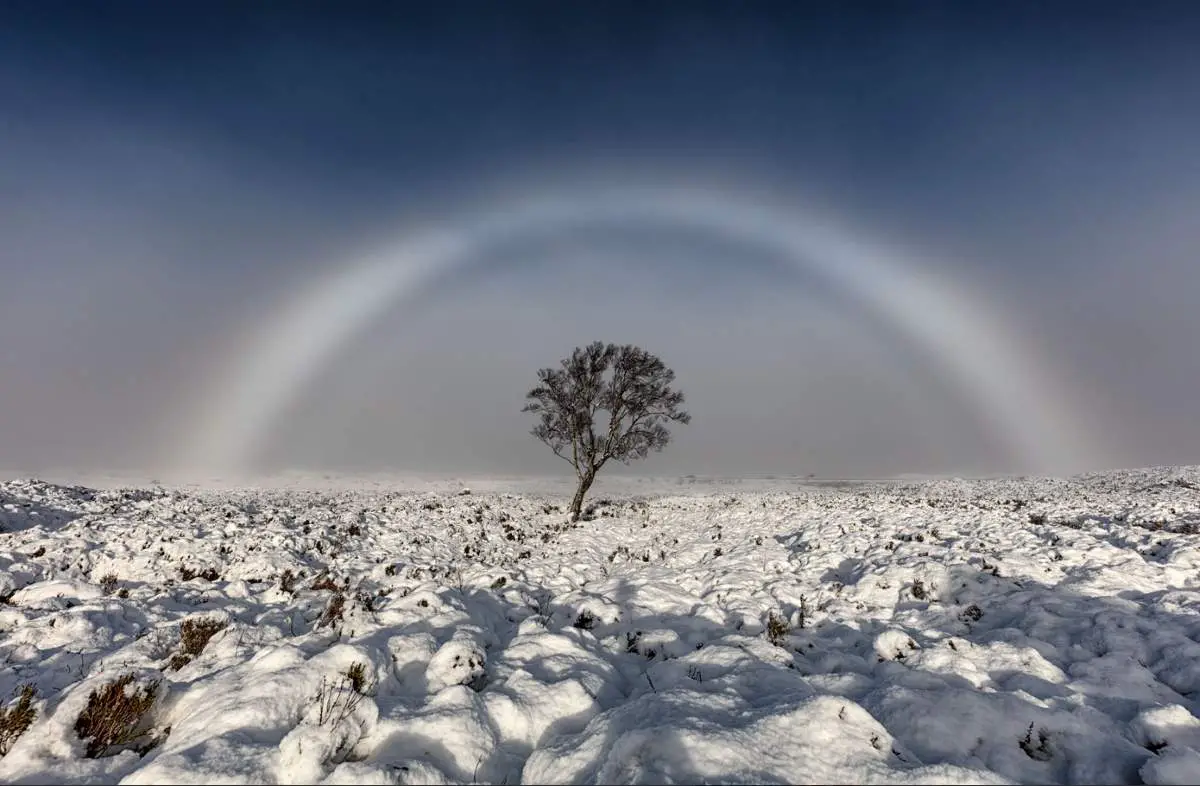
The photo above is a very beautiful fogbow photo taken by photographer Melvin Nicholson around Rannoch Moor in the Scottish highlands.
Nicholson says: “I ventured down to Rannoch Moor recently to photograph this lovely lonely tree in the mist when all of a sudden this unbelievable fogbow appeared. It is a colorless rainbow that is made up of tiny water droplets that cause fog. It’s an amazing thing to witness and can generally only be seen if the sun is behind you when you are looking at it.”
“As soon as I saw this wonderful isolated windswept tree, I knew that it had to be framed by the fog bow. Freshly fallen snow set the scene all around. It was just beyond magical and one of those days that you’ll remember for a long time to come.”
2. Giant Snowballs
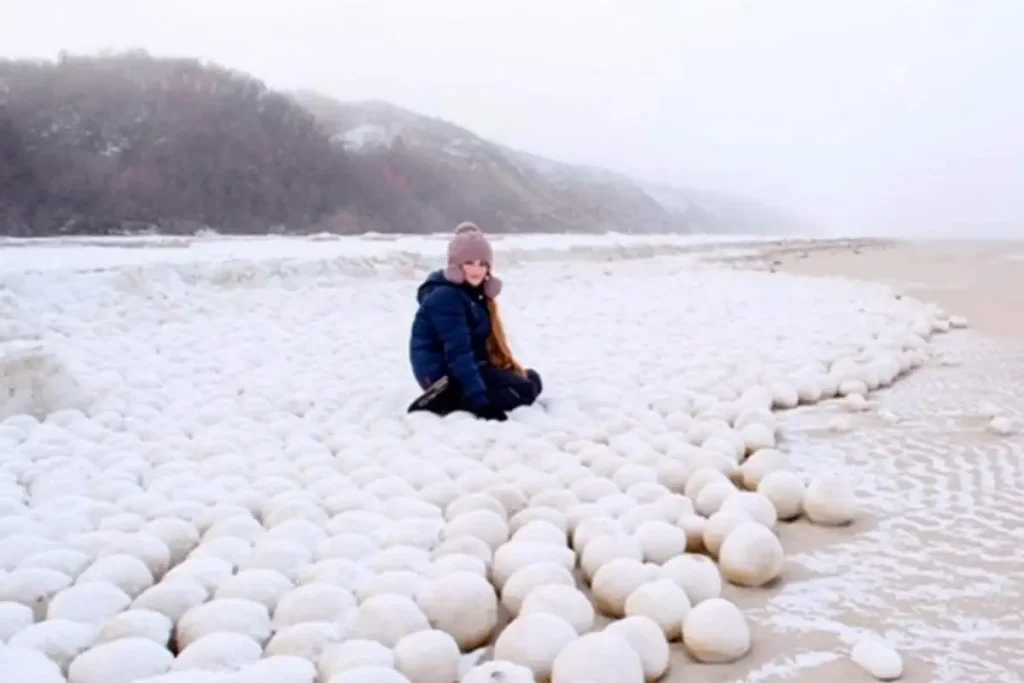
At the end of October 2016, thousands of giant snowballs covered an 18-kilometer (11-mile) Siberian beach near the village of Nyda. Their size varies from the size of a tennis ball to 1 meter (3 feet).
The press secretary of the Arctic and Antarctic Research Institute, Sergei Lisenkov explained to Russian TV: “As a rule, first there is a primary natural phenomenon – sludge ice, slob ice. Then comes a combination of the effects of the wind, the lay of the coastline, and the temperature and wind conditions. It can be such an original combination that it results in the formation of balls like these.”
First, small pieces of ice started forming, then they rolled by wind and water, collected more icy snow, and the final result was giant snowballs.
Previously, a similar phenomenon was witnessed in the Gulf of Finland in December 2014, and on Lake Michigan, in the United States in December 2015.
3. Lenticular Clouds

Lenticular Clouds are stationary lens-shaped clouds, technically known as Altocumulus lenticularis. They look so alien, they even have been offered as an explanation for some unidentified flying object (UFO) sightings.
Lenticular Clouds form at high altitudes: at low altitudes, obstacles like hills, mountains, or even human-made objects i.e. tall buildings, and bridges disrupt the flow of air into eddies.
But, at high altitudes, where stable moist air flows over a mountain or a range of mountains, a series of large-scale standing waves may form on the downwind side. If the temperature at the crest of the wave drops to the dew point, moisture in the air may condense to form lenticular clouds.
Pilots of powered aircraft tend to avoid flying near lenticular clouds because of the turbulence of the rotor systems that accompany them, but glider pilots actively seek them out. The precise location of the rising air mass is fairly easy to predict from the orientation of the clouds. “Wave lift” of this kind is often very smooth and strong and enables gliders to soar to remarkable altitudes and to great distances.
4. Sun dog

Sun dogs are also atmospheric phenomena. They can be seen anywhere in the world during any season, but the best time is when the Sun is close to the horizon: they appear as a pair of bright spots on either horizontal side of the Sun, often co-occurring with a luminous ring known as a 22° halo (see notes 1).
Sun dogs are created by light interacting with ice crystals in the atmosphere and are also known as mock suns or phantom suns, and the meteorological name is parhelia (singular: parhelion).
5. Frost Flowers
There are two phenomena called frost flowers:
- Thin layers of ice are extruded from long-stemmed plants, and
- Ice crystals grow on young sea ice and thin lake ice in cold, calm conditions.
Both types of forest flowers look amazingly beautiful.
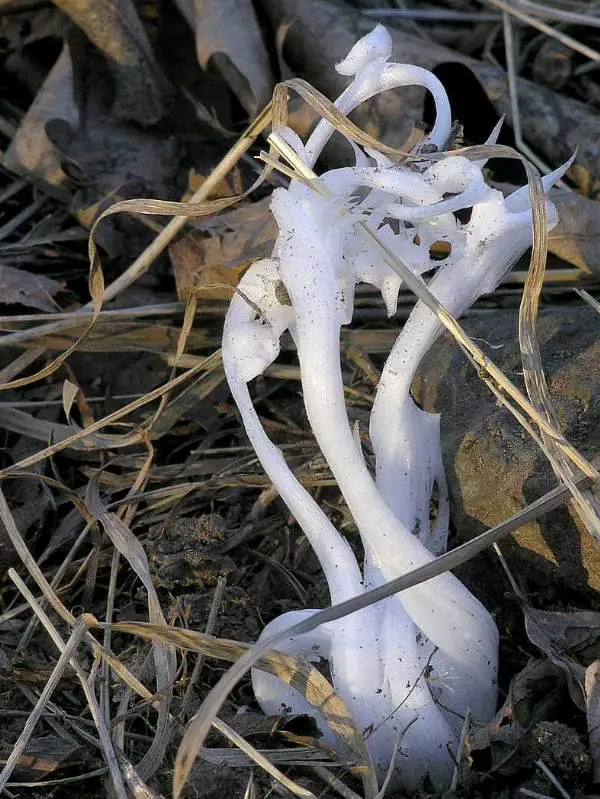
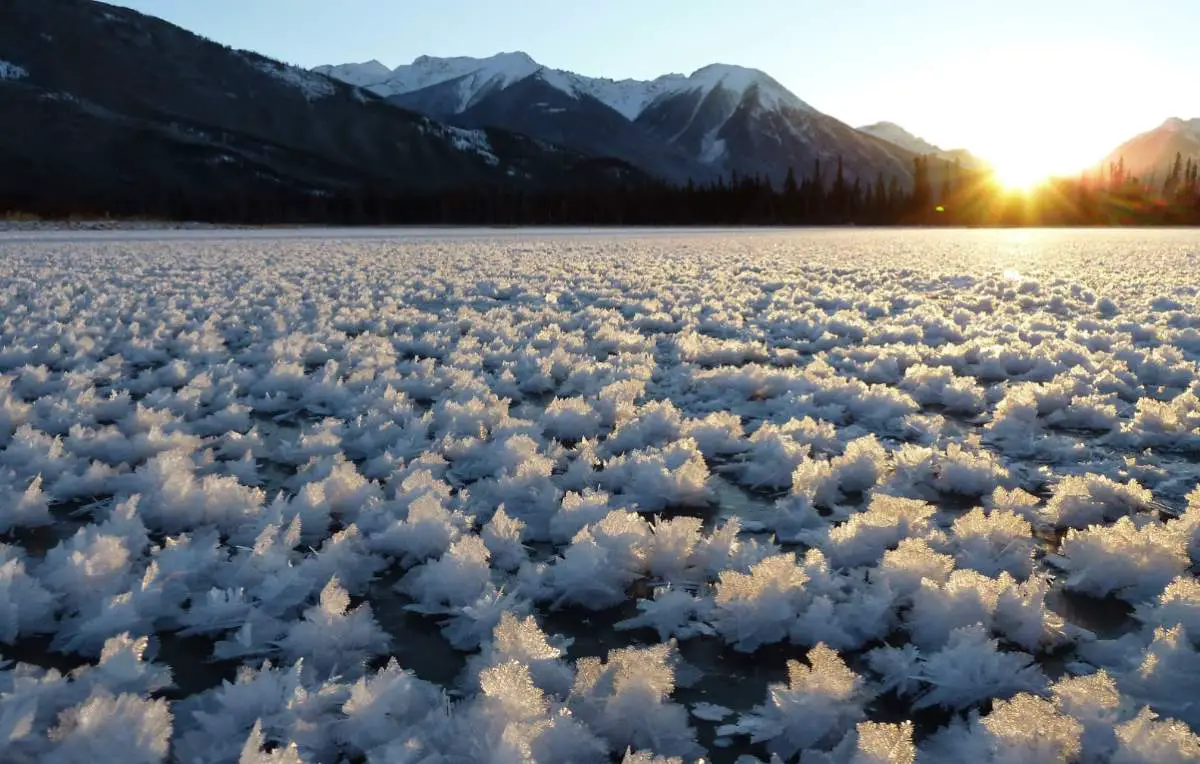
6. Volcanic Lightning
Volcanic eruptions are sometimes accompanied by flashes of lightning. This rare phenomenon is also known as a “dirty thunderstorm”. This lightning doesn’t descend from storm clouds in the sky. In a normal thunderstorm, the ice crystals collide and generate electric charges, which results in lightning. In an eruption, electrical charges are generated when rock fragments, ash, and ice particles in a volcanic plume collide and produce static charges.
Here is video footage of Volcanic Lightning showing the highly active Sakurajima volcano on the Japanese island of Kyushu. The German videographer was able to capture the rare phenomenon of volcanic lightning, as well as an explosive shockwave that rippled through the sky. Sakurajima, translated as Cherry Island, has been erupting on a regular basis since 1955 and is a constant danger to the nearby city of Kagoshima, which has a population of over 600,000.
Sakurajima is the only volcano that has frequent lightning in daily eruptions. But why that rare phenomenon happens so often there remains unclear.
Other instances have been reported above Alaska’s Mount Augustine volcano, Iceland’s Eyjafjallajökull volcano, and Mount Etna in Sicily, Italy. A very famous image of the phenomenon was photographed by Carlos Gutierrez and occurred in Chile above the Chaiten Volcano.
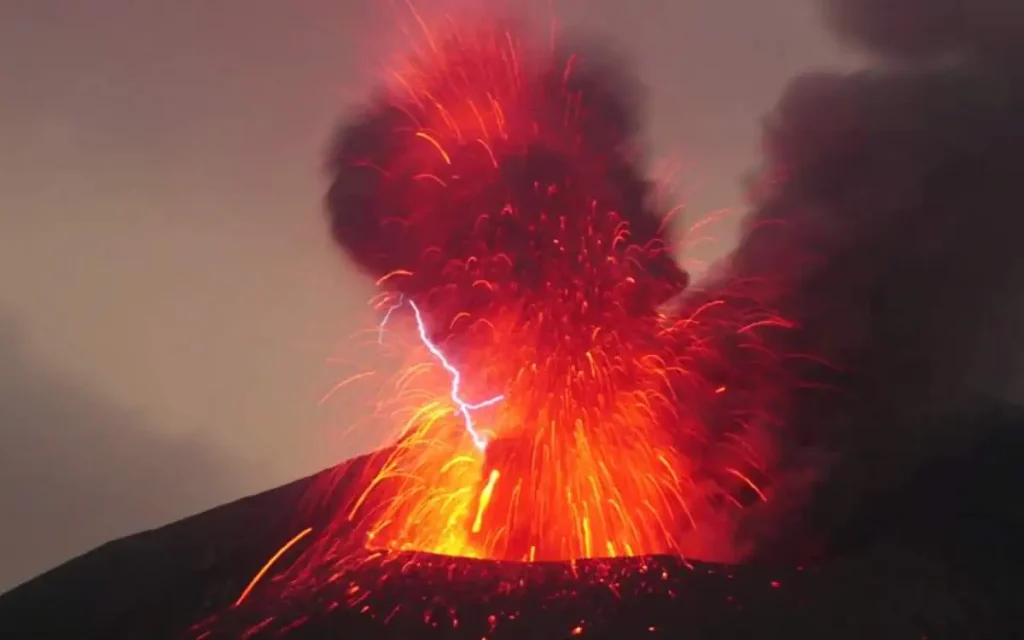
7. Fire Whirls
A Fire whirl is a kind of a whirlwind. This phenomenon is also known as fire devil or fire tornado, but despite the latter name, it is not really a tornado at all: unlike tornadoes, they aren’t formed by conditions high in the atmosphere – they’re created by hot, dry air rising rapidly from the ground, induced by a fire and often made up of flame or ash. Another difference is, fire whirls last only a few minutes.
But, despite being short-lived, they can be extremely dangerous. A fire whirl can reach up to 2,000 °F (1,090 °C), hot enough to potentially reignite ashes sucked up from the ground.
The worst-case fire whirls documented belongs to the 1923 Great Kantō earthquake in Japan: the earthquake ignited a large city-sized firestorm and produced a gigantic fire whirl that killed 38,000 people in fifteen minutes in the Hifukusho-Ato region of Tokyo! The earthquake’s estimated casualties totaled about 142,800 deaths, the fire tornado caused the single greatest loss of life.
8. Penitentes
First described in scientific literature by Charles Darwin in 1839, penitentes are vertical snow formations (closely spaced and elongated, thin blades of hardened snow or ice) found at high altitudes. They range in size from a few centimeters to over 5 meters or 16 feet.
They can be seen in all glaciated and snow-covered areas in the Dry Andes (a climatic and glaciological subregion of the Andes that runs from the Atacama Desert in northern Chile and Argentina south to a latitude of 35°S in Chile) above 4,000 meters or 13,120 feet. In Spanish, their name is nieves penitentes (Spanish for “penitent-shaped snows”).
The name “Penitente” comes from the resemblance of a field of penitentes to a crowd of kneeling people doing penance.
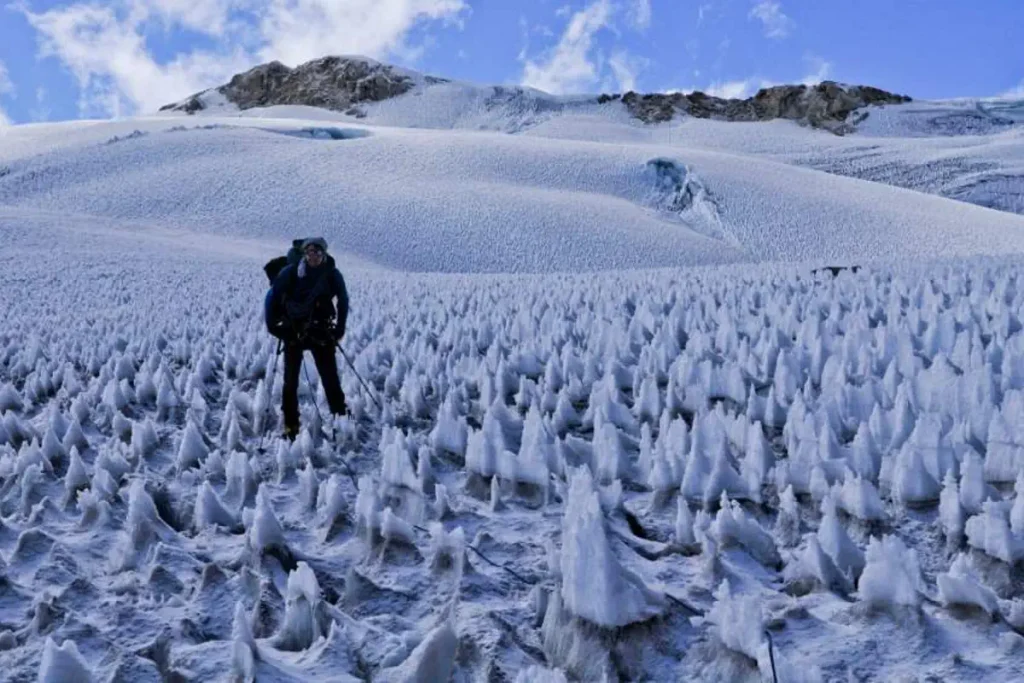
9. Fog domes
A “fog dome” is a very unusual phenomenon. It is a fog that looks like a balloon. The most likely explanation is that the “fog dome” has been caused by a source of heat close to the ground, possibly an agricultural building or a relatively warm pool of water. As the fog has formed in the valley this heat source has forced the fog to lift away from the ground into a dome as warmer air rises; like a hot air balloon.

10. Ice volcanos
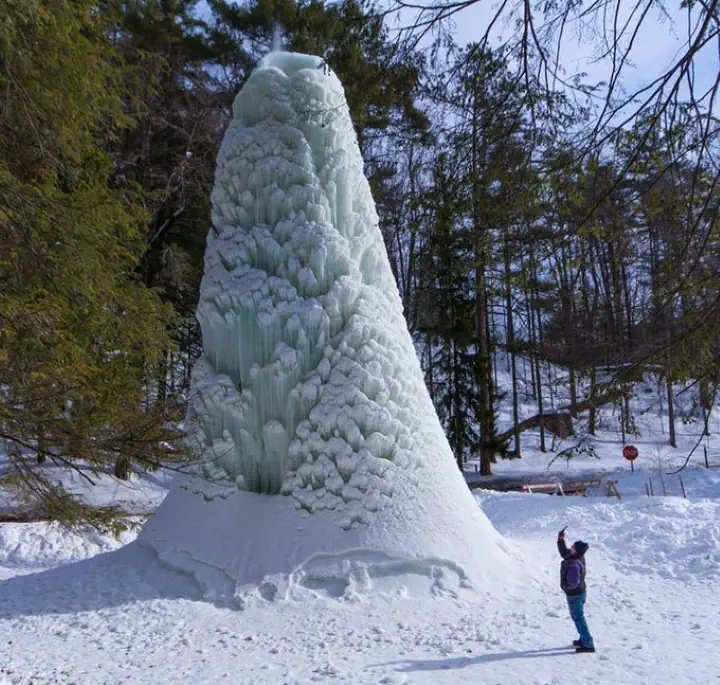
Particularly harsh and cold winters can turn a geyser into a “frozen volcano”, as happened to this geyser in a pond near the Glen Iris Inn at Letchworth State Park, New York in February 2015.
Notes
- A 22° halo is an optical phenomenon that belongs to the family of ice crystal halos, in the form of a ring with a radius of approximately 22° around the Sun or Moon (in which case it is also called a moon ring or winter halo). It forms as the sun- or moonlight is refracted in millions of hexagonal ice crystals suspended in the atmosphere. Read more about 22° halo on W
ikipedia
Sources
- Giant snowballs appear on Russian beach in Siberia on BBC.com
- Lenticular Cloud on Wikipedia
- Frost flower on Wikipedia
- Frost flower (sea ice) on Wikipedia
- Dirty thunderstorm on W
ikipedia - Fire whirl on Wikipedia
- Penitente (snow formation) on Wikipedia
- Fog bow on Wikipedia
- How Many Elephants are Left in the World in 2025? - August 17, 2025
- Moon Landings: All-Time List [1966-2025] - February 2, 2025
- What Is Max-Q and Why Is It Important During Rocket Launches? - January 16, 2025
